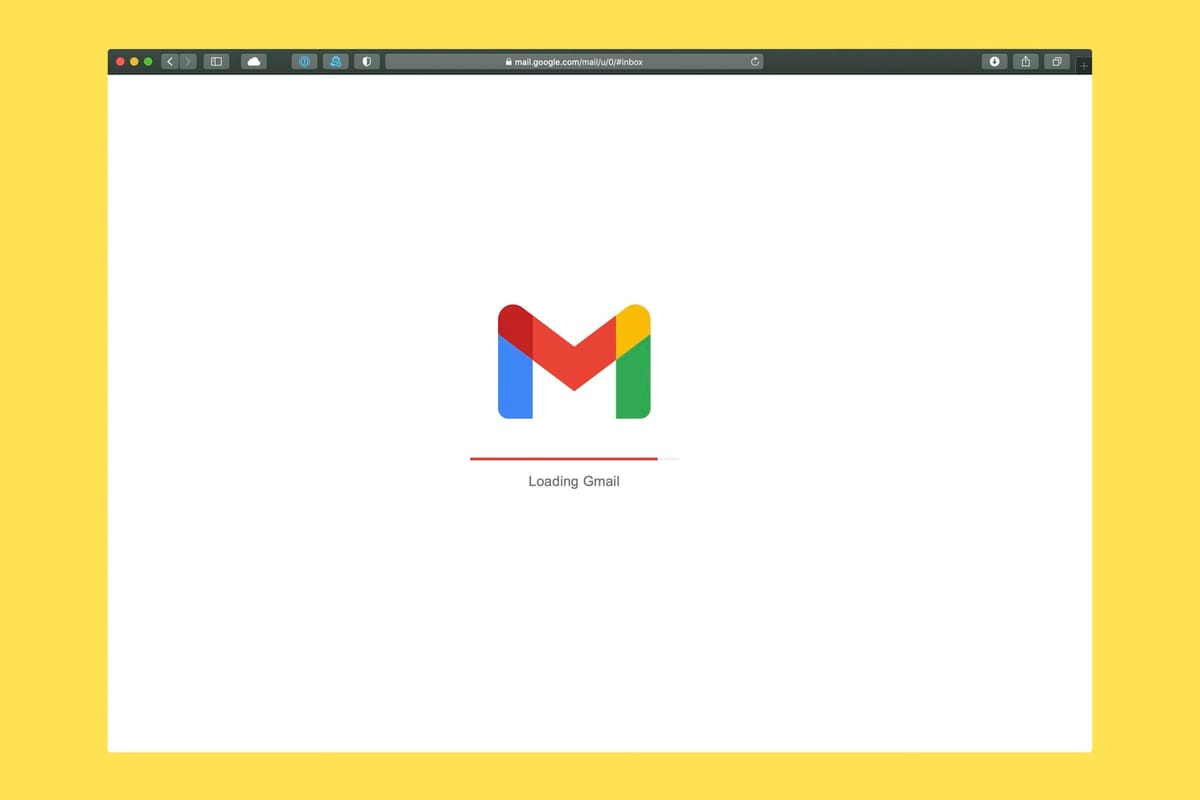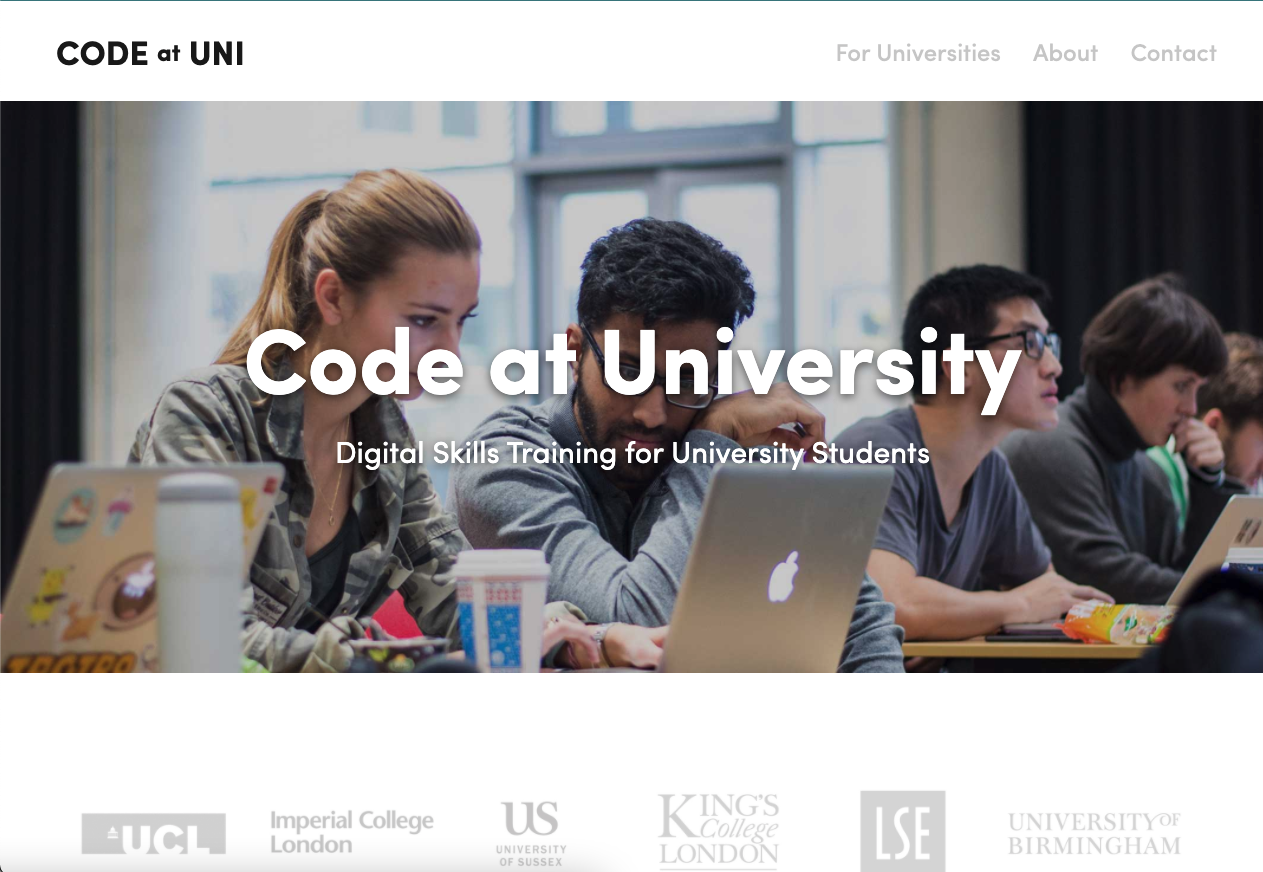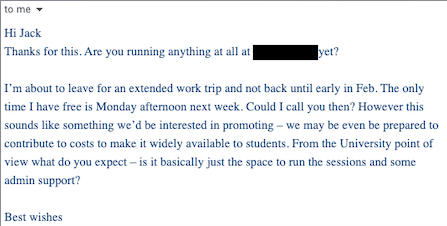Indie Hackers guide to cold outreach - the 7 steps I used to generate ~$600k in sales

My name is Jack Bridger and I'm a software engineer, but that wasn't always the case.
When I was at university in 2013, I founded Code at Uni.
Code at Uni was as an indie business before I knew what indie was.
While mostly a part time business, we were able to generate ~$600k of sales to date and at its peak ~$200k p/a and the vast majority was through cold outreach conducted when I knew almost nothing about sales.

After this I spent two years working in sales at VC backed startups - including Stack Overflow - and generated deals with huge multinational companies using very similar strategies.
I wanted to share a very simple strategy on how you can build an effective sales process in a very short space of time.
Step 1 - identify your target audience & the problem you are solving.
This is the most important step
That means which companies, which people within those companies and a very clear problem you are solving.
For example for Code at Uni
Companies: UK University Business Schools
Specific person's job titles or traits: Director of Education
Problem we are solving: Improving student experience scores & improving employability of students
Step 2 - Write a draft, personalised email for each of your personas
Keep it short & address the problem they're facing. If you want me to review it, you can find me on Twitter @jacksbridger
For example, here is a real email we used:
Dear Joe
I'm getting in touch because we noticed Example University has been increasingly pushing digital and I thought that as Director of Education, you may either be the right person to speak to or may be able to direct me to the right person responsible for digital initiatives.
My organisation - Code at Uni - runs entry-level intensive coding courses for university students; in just one weekend we teach complete beginners all the skills they need to build their own websites as well as equipping them with the knowledge to drive digital projects. We do this because we want to achieve our mission of giving every university student the opportunity to learn to code.
Over the last three years we've taught over 2,000 students at 15 universities including LSE, UCL and Imperial College Business School.
Are you available for a call sometime next week? I'd like to share more details with you and explore the potential to run a similar course for students within Example University.
Critique of my own email
It doesn't really address the problem the Director of Education is facing it just says what Code at Uni does. It's also a bit long
However, it does have social proof (referencing similar universities), seems personalised & relevant and it ultimately got a reply that led to £100k+ of work.

Step 3 - Identify the parts which are personalised - you can see them in bold above
Ideally it's personalised in a way that is easy to populate using mail merge later on but without being generic.
Dear *Firstname*
I'm getting in touch because we noticed *University* has been increasingly pushing digital and I thought that as *Job title*, you may either be the right person to speak to or may be able to direct me to the right person responsible for digital initiatives.
My organisation - Code at Uni - runs entry-level intensive coding courses for university students; in just one weekend we teach complete beginners all the skills they need to build their own websites as well as equipping them with the knowledge to drive digital projects. We do this because we want to achieve our mission of giving every university student the opportunity to learn to code.
Over the last three years we've taught over 2,000 students at 15 universities including LSE, UCL and Imperial College Business School.
Are you available for a call sometime next week? I'd like to share more details with you and explore the potential to run a similar course for students within *University*.
Step 4 - put it into a spreadsheet ready to populate

Step 5 - fill out the spreadsheet
There are a few ways you can do this.
- Virtual assistant - If you have budget, a virtual assistant can be invaluable for this. This is the approach I took. If you need help finding one let me know.
- DIY - please start in small batches (definitely no more than 100) or you will give up.
Where to research information:
- Company websites - depends on industries but universities list staff and often list their emails too.
- LinkedIn - your best friend. Just beware of hitting search limits or you may need to upgrade and pay for Sales Navigator or use multiple LinkedIn accounts. If you do pay for SalesNav, you should cancel before your month ends and give your reason as "too expensive" - they should give you two months at 50% off.
- Other tools: depending on the info you need, you may find other tools. If LinkedIn and company websites aren't working for you, hit me up and I'll help you find others.
Where to find emails - use a combo of these and pay nothing
- http://Apollo.io - 50 free p/m
- http://Hunter.io - 25 free p/m
- http://findthat.email - 50 free p/m
- http://Snov.io - 50 free p/m
- http://Findthatlead.io - 50 free p/m
Step 6 - Send out the emails
To send your emails in a mail merge style, I recommend using Streak - I have no affiliation with them but it's what I used. It's about $15 per month and the founder appeared on Indie Hackers podcast.
It has a lot of added benefits as it's a CRM too.
Once you have Streak:
- Setup your email template - here's a guide
- Upload your spreadsheet with your information on each contact and send your campaign
If you need help with this let me know but if you keep iterating on this it should be enough to book meetings with potential customers.
Step 7 - what next?
Sales is not complicated but it is hard - it requires a lot of work and while there are efficiencies, there aren't many shortcuts.
Some of the things to look at next (in rough order of importance)
- Iterating on your targeting and messaging
- Keeping track of all your meeting notes in a CRM
- Automated follow up
